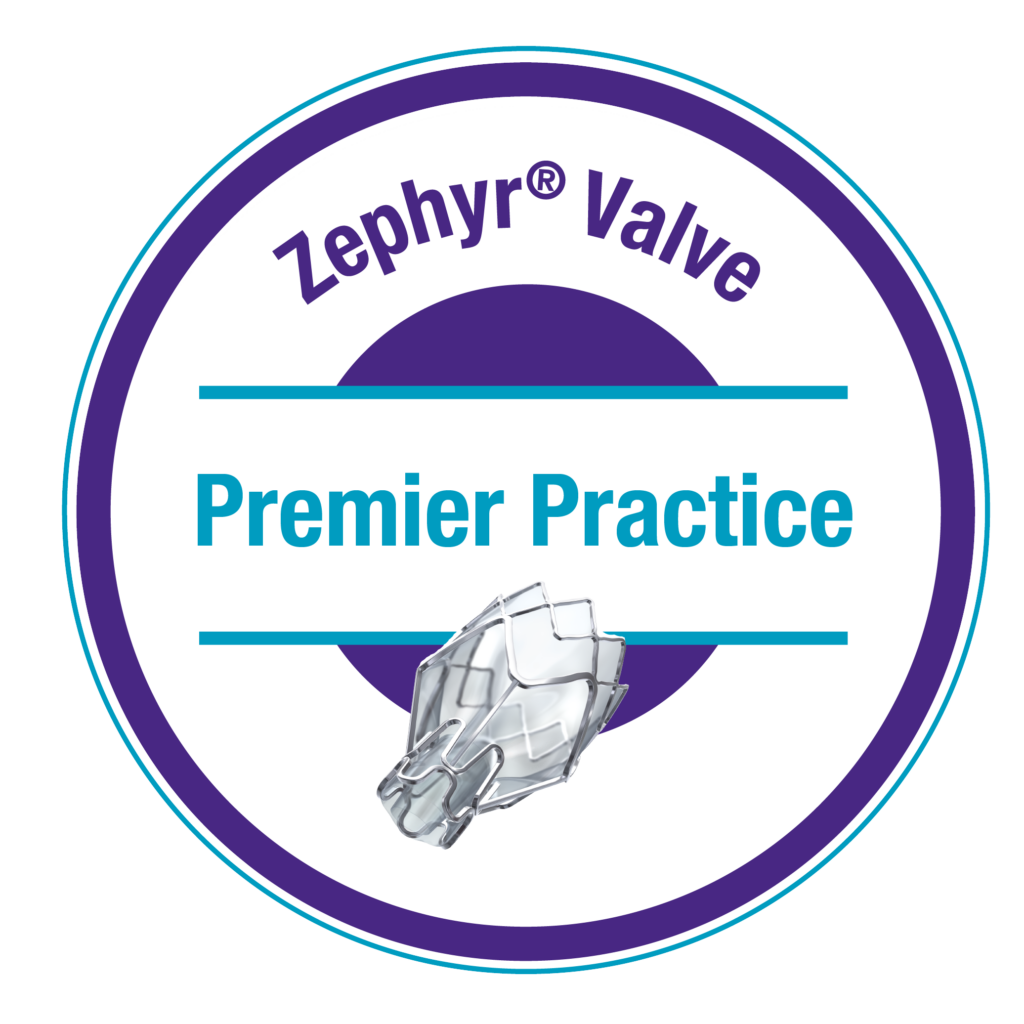Zephyr® Endobronchial Valve Procedure for Severe COPD/Emphysema
NCH has been recognized as a Premier Practice for its exceptional expertise in the treatment of patients with severe chronic obstructive pulmonary disease (COPD) and emphysema using the Zephyr® Valve. This designation places NCH among the top Zephyr Valve treating centers in the nation, acknowledging the high level of care provided to patients undergoing this advanced treatment.

Is the Zephyr Valve Right for You?
What is the Zephyr Valve?
The Zephyr Valve Treatment is a minimally invasive treatment for people with severe COPD/emphysema. The Zephyr Valves are an implant designed to fit in the airways of the lungs. The valves are placed in selected airways during a bronchoscopy procedure (no incisions or cutting required) and are an alternative to the more invasive traditional lung volume reduction surgery.
Who is the Zephyr Valve for?
Generally, candidates who should be evaluated for Zephyr Valve Treatment are patients who:
- Have a confirmed diagnosis of COPD or emphysema
- Have to stop to catch their breath often, even with taking their medication as directed
- Have reduced lung function (FEV1≤50% predicted)
These are general criteria but only a Zephyr Valve trained physician can determine if you are a candidate. There is an evaluation process to determine if you are a candidate for the treatment. Find a treating center near you.
Benefits and Patient Experience
What are the Benefits of Zephyr Valves?
In clinical studies patients treated with Zephyr Valves have been shown to1:
- Breathe easier
- Be more active
- Enjoy an improved quality of life
How does the Procedure Work?
If you have severe COPD/emphysema you may struggle to catch your breath while doing everyday tasks. This is because the damaged parts of your lungs have lost their ability to release trapped air and have become overinflated. Zephyr Valves are tiny, one-way valves that allow the trapped air to be exhaled from the lungs and prevent more air from becoming trapped there. This helps patients breathe better and do more.1

What Can Patients Expect?
Zephyr Valves are placed during a procedure that does not require any cutting or incisions. A typical Zephyr Valve procedure looks like this:
- Step 1: The doctor will give the patient medicine to make them sleepy.
- Step 2: A small tube with a camera, called a bronchoscope, will be inserted into your lungs through your nose or mouth.
- Step 3: During the procedure your doctor will place on average 4 Zephyr Valves in the airways. The number of valves placed will depend on the individual anatomy of the patient’s airways and physician discretion.
- Step 4: You will stay in the hospital for a minimum of three (3) nights. Some patients who experience a complication may be required to stay longer.
- Step 5: After the procedure, you will continue to use the medicines that your doctor has prescribed for your condition.
Locations
1Criner G et al. Am J Respir Crit Care Med. 2018; 198 (9): 1151–1164.
Important Safety Information: The Pulmonx Zephyr® Endobronchial Valves are implantable bronchial valves indicated for the bronchoscopic treatment of adult patients with hyperinflation associated with severe emphysema in regions of the lung that have little to no collateral ventilation. Complications can include but are not limited to pneumothorax (tear in the lung), worsening of COPD symptoms, hemoptysis, pneumonia, and, in rare cases, death. The Zephyr Valve is contraindicated in patients who have not quit smoking. Please talk with your physician about other contraindications, warnings, precautions, and adverse events. Only a trained physician can decide whether a particular patient is an appropriate candidate for treatment with the Zephyr Valve.